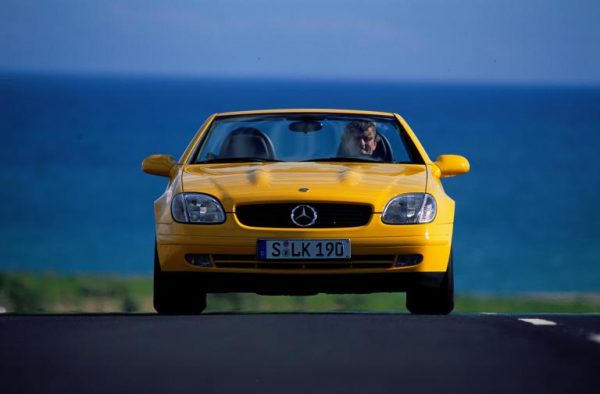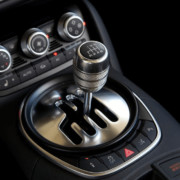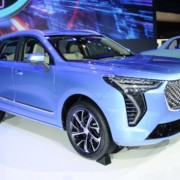Mercedes-Benz SLK 230 Kompressor R 170 sold
Полный перечень неисправностей
|
Пробег, км |
Ремонт |
Расходы, Евро |
|
55.130 |
Замена тормозных колодок на передней оси |
182, 12 |
|
79.171 |
Замена уплотнителя багажника |
Гарантия |
|
102.605 |
Замена кожуха опоры переднего тормозного механизма |
Гарантия |
|
Новые тормозные диски и колодки на передней оси |
408, 46 |
|
|
206.438 |
Замена комбинированного переключателя стеклоочиститель/поворотник |
529, 34 |
|
209.883 |
Замена дефектной педали акселератора |
295, 76 |
|
211.772 |
Замена лобового стекла после попадания камня |
710 |
|
214.187 |
Замена лампы ближнего света левой фары |
14, 89 |
|
240.894 |
Появление сообщения о неисправности подушки безопасности. Плохой контакт в замке. Прошло само без вмешательства мастера. |
— |
|
255.157 |
Замена форсунок омывателя стекол |
267, 44 |
|
261.161 |
Тормозные диски и колодки по кругу и тормозные колодки стояночного тормоза. |
850, 52 |
|
Две лампочки подсветки номерного знака. |
10,02 |
|
|
270.598 |
Катализатор и два кислородных датчика. |
1760, 48 |
|
284.888 |
Замена нескольких лампочек. |
20, 30 |
|
286.172 |
Замена реле-регулятора напряжения генератора. Обновление программы управления двигателем. |
434, 62 |
|
289.874 |
Повторная замена форсунок омывателя лобового стекла |
267, 44 |
|
295.987 |
Замена правой лампы дальнего света |
12, 99 |
В отличие от первого поколения С-класса W202 и его приемника W203, 204-серия не имеет проблем с коррозионной стойкостью. Днище, колесные арки, пороги и полости хорошо обработаны антикоррозионными составами.
 |
|
Полости, обработанные антикоррозионным составом, состояние после 100 000 км. |
За время эксплуатации C 180 K Classic приходилось удивляться необычному факту. Немецкий седан буквально «питался» лампами наружного освещения. Только за первые 100 000 км перегорело 9 лампочек. За все же 300 000 км пришлось сменить более 20 лампочек. Эксперты объясняют этот феномен сильными скачками напряжения в бортовой сети. К счастью, замена ксеноновых ламп производится за счет производителя.
Мерседес С 180 требовал постоянного контроля уровня масла и присутствия на борту его дополнительного запаса. Иначе двигатель могли ожидать фатальные последствия. Маленький мотор Daimler, как оказалось, имеет большой масляный аппетит. Примерно со 100 000 км мотор стал потреблять около трети литра на 1000 км, при этом расход масла все время имел тенденцию к росту. В абсолютных цифрах это вылилось в 39 литров сожженного масла к 207 000 км и 93 литрам к 301 800 км. Возможно, в дальнейшем наступит момент, когда масляный аппетит превысит расход топлива. В настоящее время Мерседес потребляет 9,6 литров горючего на 100 км, в то время как при пробеге 100 000 км он нуждался в 9,9 л.
Еще одна загадка, которую припас Benz: с каждым километром он становится все сильней и сильней. За время трудовой деятельности протяженностью более чем 300 000 км, мощность его двигателя выросла почти на 5 л.с.
После 100 и 300 тыс. км был выполнен подробный осмотр и анализ технического состояния Мерседес С180. При первом исследовании в протоколе отмечена небольшая утечка охлаждающей жидкости через патрубок отопителя и «запотевание» на входе в рулевую рейку. Выхлопная система, электрические разъемы, узлы и лакокрасочное покрытие были в идеальном состоянии. Днище было чистым, без следов ржавчины. При осмотре эндоскопом кузовных полостей так же не было выявлено следов коррозии. Камеры сгорания не имеют следов износа.
 |
|
Состояние стенок цилиндров после 100 000 км. |
После 300 000 км состояние лакокрасочного покрытия все еще было хорошим. Под капотом было обнаружено разрушение патрубка подачи воздуха на входе в воздушный фильтр. Под крышкой клапанов появилась небольшая течь. На рулевом механизме обнаружена поверхностная ржавчина. Полости, кромки дверей, капота и колесные арки без следов зарождения коррозии.
 |
|
Разрушение патрубка на входе в воздушный фильтр после 300 000 км. |
 |
|
Поверхностная ржавчина на элементах рулевого механизма после 300 000 км. |
 |
|
Состояние днища после 300 000 км. |
 |
|
Состояние полостей после 300 000 км. |
300 000 км – серьезная цифра, обычная для коммивояжеров или таксистов. Очевидно, что высокая начальная цена за вход в мир Mercedes оправдывает себя. Ибо Мерседес С 180 едва ли обнаруживает признаки усталости. Даже не смотря на неисправности, проявившиеся в течение 6 лет, общее впечатление остается положительным.
Vehicle history

The first-generation Mercedes-Benz SLK was presented at the Turin Motor Show in April 1996 and was launched on the market in autumn of the same year. It added a new dimension to series of „SL“ (sporty, lightweight) vehicles, the K in the name „SLK“ standing for „kurz“ or „short“. The engineers were uncompromising when it came to safety, comfort, environmental compatibility and suitability for everyday use. They developed a vehicle that differed from other roadsters in its class in many respects, the most noticeable, perhaps, being the vario-roof – a steel roof which could be fully retracted into the boot.
A near-production study of a sleek but safe roadster with the now familiar name „SLK“ had been exhibited at the Turin Motor Show two years earlier in 1994. Since then the SLK had caused a sensation wherever it appeared. At the Paris Motor Show in October of the same year a further study appeared, this time featuring one of the most spectacular details of the subsequent series-production vehicle: the vario-roof.
In Germany the SLK was available in two variants: the SLK 200, featuring a 2.0-litre four-cylinder engine with an output of 100 kW (136 hp), already familiar from the C‑Class and E‑Class, and the SLK 230 KOMPRESSOR, with a turbocharged 2.3‑litre four-cylinder engine that delivered an output of 142 kW (193 PS) and also featured in the C 230 KOMPRESSOR. A 2.0-litre variant of the supercharged engine was developed for Italy, Portugal and Greece. This had an output of 141 kW (191 hp) and, in addition to powering the SLK, was also fitted in an export version of the C-Class Saloon.
The supercharged engine not only delivered more output than a comparable naturally aspirated engine but beefier torque too. In the SLK 200 KOMPRESSOR the figure was 270 newton metres and in the SLK 230 KOMPRESSOR 280 newton metres. With both engines this was available from as low as 2500 rpm and remained constant up to 4800 rpm. Both engines achieved a top speed of 231 km/h, and acceleration from 0 to 100 km/h took 7.7 and 7.6 seconds. The SLK 200 did not lag far behind: it offered 190 newton metres between 3700 and 4500 rpm, took 9.7 seconds to accelerate from 0 to 100 km/h and had a top speed of 208 km/h.
The fully retractable, electrohydraulic vario-roof was made of steel and folded away into the boot at the touch of a button, turning a weatherproof coupé into a roadster in next to no time. The mechanism was sheer poetry. First the two-part roof pivoted upwards. At the same time the parcel shelf disappeared beneath the boot lid, which tipped backwards and upwards in order to make room in the boot for the roof. The roof folded and glided into place, the boot lid closed, and the parcel shelf returned to its original position. The whole process took just 25 seconds.
The two fixed roll-over bars, positioned behind the seats, were made from heavy-walled tubular steel (diameter 40 millimetres, wall thickness 2.5 millimetres) and tapered towards the top. Together with the particularly robust A-pillars, they ensured the exceptional standard of safety for which open-top Mercedes-Benz vehicles are known. The roll-over bars were bolted to a robust cross-member towards the top of the rear bulkhead. The A‑pillars concealed two tubes with diameters of 20 and 25 millimetres which were inserted into one another, shaped and welded to the outer shell of the A-pillars using special fittings. Each of the tubes had a specific task in the event of a roll-over: the upper one reached as far as the frame of the windscreen, improving its rigidity, while the lower tube reinforced the A-pillar at dashboard height. Other safety features included two airbags (driver, passenger), automatic seat belts, belt tensioners and belt force limiters. Sidebags, which unfolded between the occupant and the door, were available as an option.
References
- A Complete Guide to Street Supercharging — Page 21 Pat Ganahl — 2009 One of the first companies to use superchargers for automobiles in Germany was Daimler (which made the Mercedes cars, later to merge with Benz in 1926). With the assistance of Dr. Porsche…
- Standard Catalog Of Mercedes-Benz — Page 12 Jim Luikens, Mary Hedberg — 2009 -«Early in the 1920s, Daimler (Mercedes) became the first manufacturer to install a supercharger on a production model. Supercharging was first used on the 6/25/40 1.6-liter four and also on the 10/40/65 2614 cc engine.
- Alan Allard — Turbocharging & supercharging 1986 «As a result of this success with their first supercharged model, Mercedes designed a supercharged 1 ‘/j-litre sports car which competed in the 1922 Targa Florio. All the early Mercedes supercharging systems employed a roots-type blower, …»
- Jeff Hartman — Supercharging Performance Handbook — Page 9 2011 «In 1921, a supercharged 28/95 Mercedes developed by a Daimler team with assistance from Ferdinand Porsche … »
- Mercedes-Benz — Page 1922 Dennis Adler — 2008 «A car with a «K» suffix can also denote a supercharger, which is the more common usage.) First seen in 1927, the S series models were the first all-new cars to come from Daimler-Benz (although the cars would be called Mercedes- Benz).»
- ^
- ^














